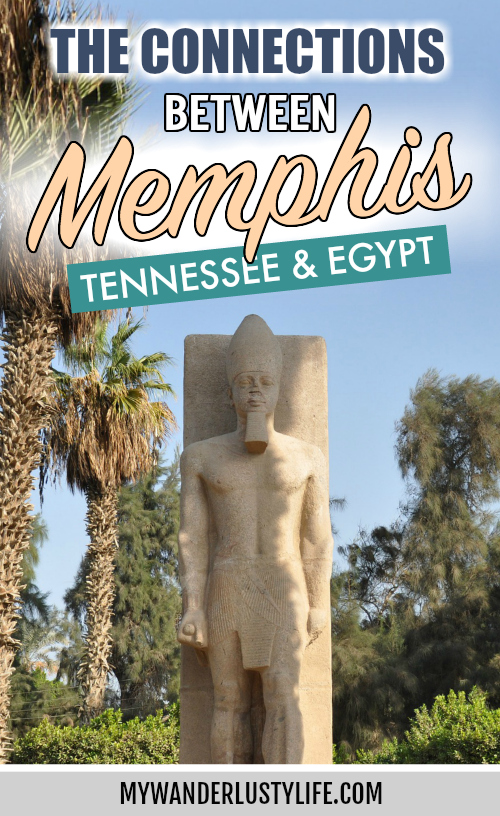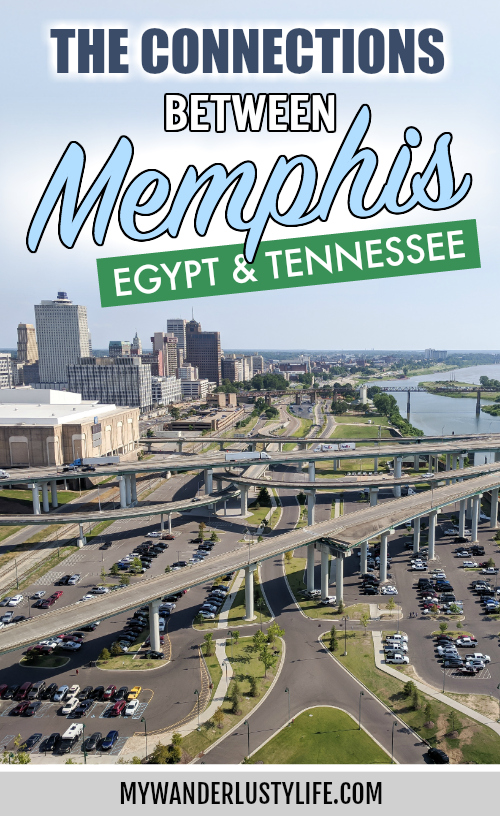I’ve always known there was a connection between Memphis, Tennessee and Memphis, Egypt. After all, I was born, raised, and have spent the majority of my life in the former. I grew up thinking our pyramid was just your everyday architectural landmark, not unlike a skyscraper or your run-of-the-mill gateway arch.
It wasn’t until someone from the outside world pointed to it and asked “What the hell is that?” that I realized maybe it wasn’t normal to see an Egyptian pyramid in the American South?
Still, I responded “Umm, it’s a pyramid? You know, ‘cause this is Memphis?” I fully believed I had stated the obvious. Turns out—brace yourself—not everyone knows that Memphis was actually the city of Inebu-hedj, once the capital of ancient Egypt. Ergo, pyramid. But don’t feel bad if you didn’t know that, I even confused A MAN FROM EGYPT with this information once.

Why is Memphis, Tennessee named after Memphis, Egypt?
So yes, Memphis, Egypt was one of the oldest and most important cities in ancient Egypt. It was located right on the Nile River near the Giza Plateau. (Hey, Memphis, Tennessee is on a river too! Well, look at that.)
Back in the 3000s BC, this ancient Egyptian city went by the name of Men-nefer (“the enduring and beautiful”). This eventually became Memphis thanks to the Greeks and their inclination towards interpretation.
About a gazillion years later, John Overton, James Winchester, and future President of the United States Andrew Jackson seized the opportunity to one-up the founders of the newly-formed Cairo, Illinois. (True story.) They named their new city Memphis in hopes of it one day being the seat of great kings like its river-adjacent namesake. And, technically, it was. *lights an Elvis prayer candle, puts on some B.B.* #prophecyfulfilled
For what it’s worth, a couple decades into the 21st century AD where we are now, Cairo, IL is little more than a ghost town while Memphis, TN continues to grow and prosper. Enduring and beautiful, indeed!

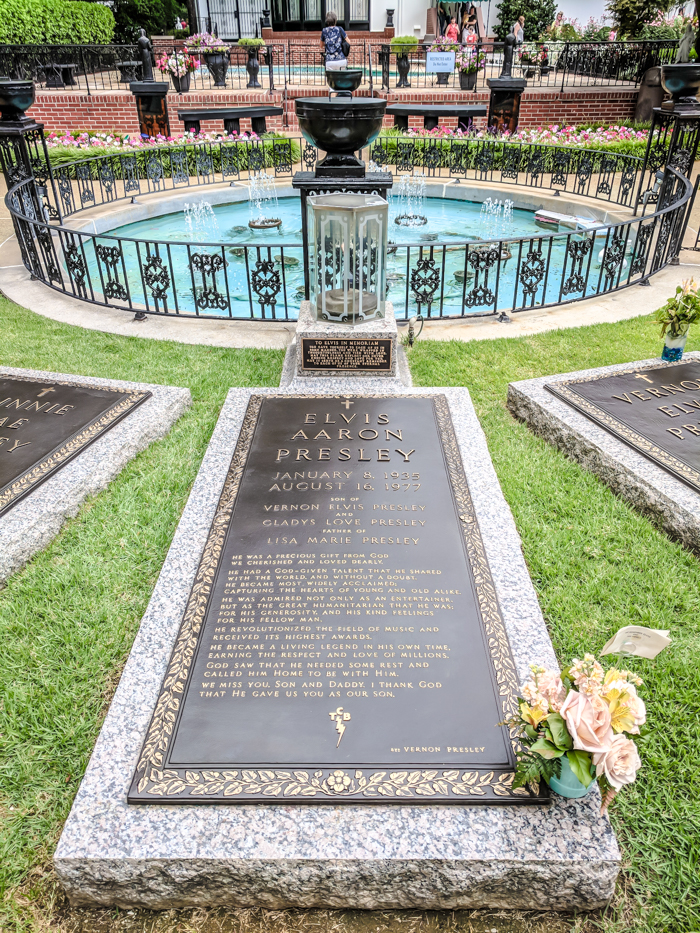
What is Memphis, Egypt famous for?
Memphis, Egypt was one of the most important cities in ancient Egypt as it was once the capital and a major player in culture, commerce, and trade. It was so well known it even got a shoutout in the Bible (even if it doesn’t paint it in the best light). Can your namesake say that? Actually, almost 100% yes. The “world’s first baby name book” is pretty popular.
Memphis (Egypt) sat along the Nile River in the Giza Plateau, an area famous for its pyramids. (While Memphis, Tennessee is located right on the Mississippi River in an area famous for BBQ sandwiches and overnight shipping.)
While Memphis (Egypt) has pyramids of its own, it was during Memphis’s reign as capital that the more recognizable pyramids at Giza and those surrounding Cairo were constructed. Those world famous pyramids are a part of Memphis’s legacy.
Fittingly, the Pyramid–with a capital P–eventually became the symbol of Memphis, Tennessee in the late 1900s. (Are we referring to our time on Earth in these terms yet?)
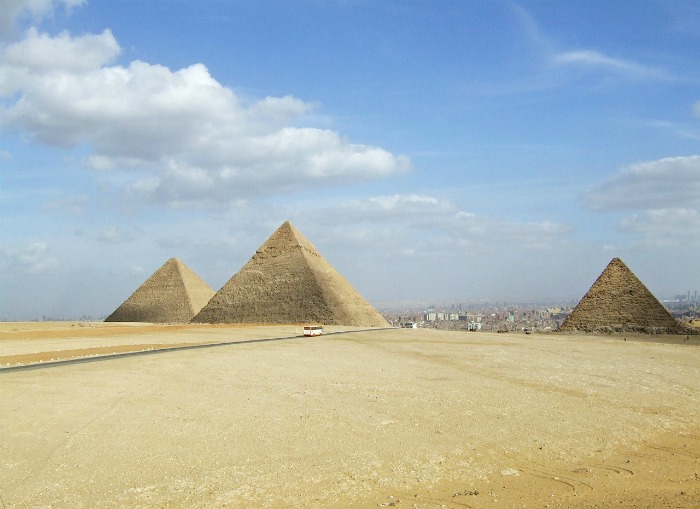
Does Memphis, Egypt still exist?
Well, yes and no. Does the actual physical location of Memphis, Egypt still exist? Yes. Is it still a thriving cultural and commercial capital? No.
Memphis, Egypt fell into decline the way all prosperous ancient civilizations do (you can thank the Romans for this one). The city and every important structure in it was more or less sold for scraps that were then used to build the foundations of Cairo.
Today, Memphis, Egypt exists only as a city of ruins near a village called Mit Rahinah, less than 20 miles south of Cairo. The site was designated a UNESCO World Heritage Site in 1979 and spends its days as little more than a full-time archaeological dig.
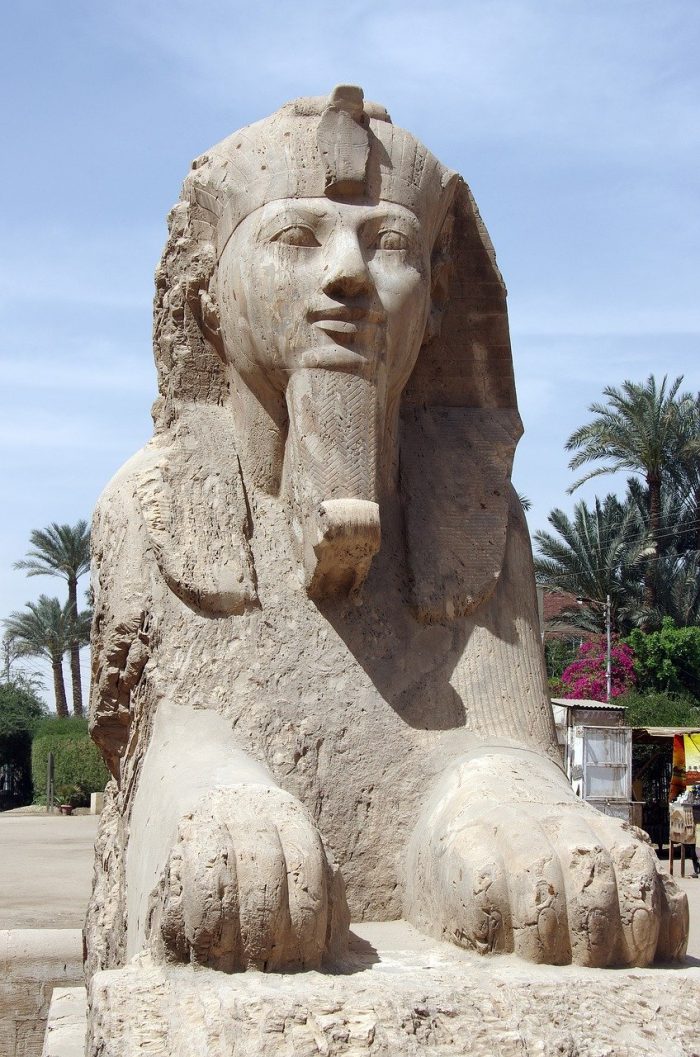
Is Memphis, Egypt worth visiting?
If ancient Egyptian ruins interest you, then absolutely Memphis, Egypt is worth visiting. Plus, it’s close enough to Cairo that it’s not incredibly difficult to get to and there are many day tours to Memphis available.
And as someone whose childhood revolved around many-an Egyptian structure, Memphis, Egypt is high on my bucket list.
What is there to see in Memphis, Egypt?
The city boasts many great museums and sites like the Open Air Museum at Mit Rahinah, the statue of Ramesses II, the Sphinx of Memphis, the Saqqara Necropolis, and much more.
For all the awesome things to do in Memphis, Tennessee, check out my post on the subject. There’s more than you think!
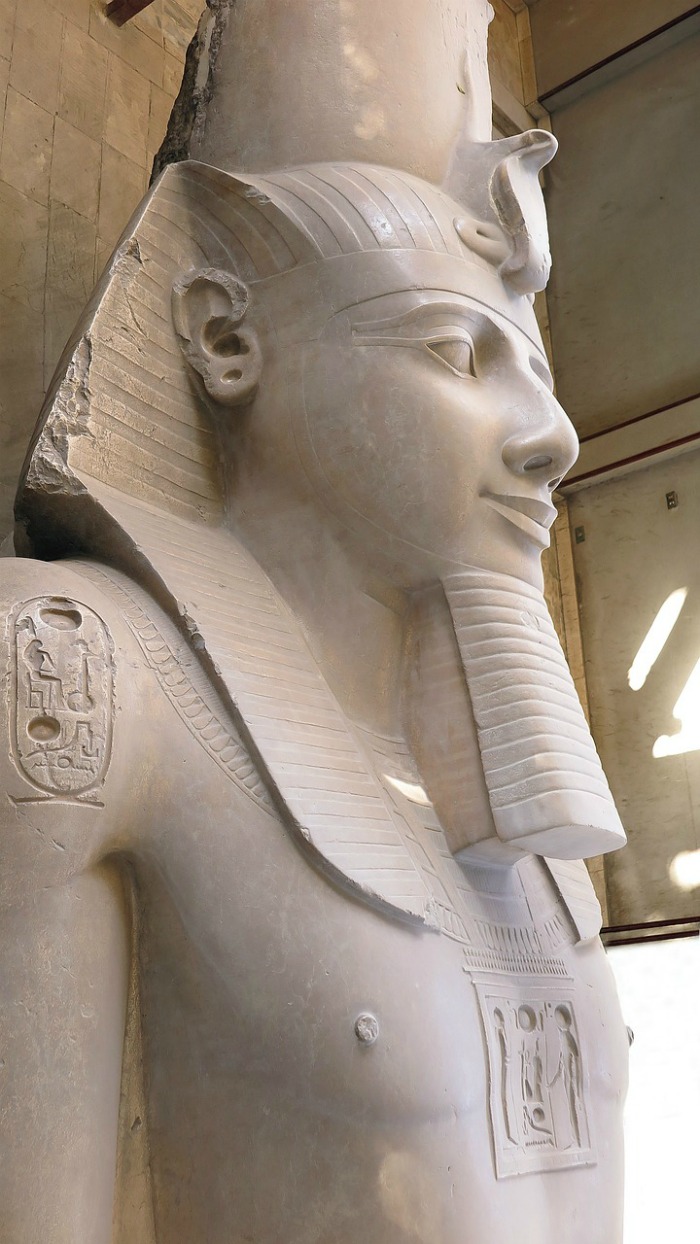
Connections between Memphis, Tennessee and Memphis, Egypt
For the better part of the 80s and 90s, Memphis, Tennessee was hell-bent on Egypt-ifying itself. Technically, you could classify this into the Post Modern Egyptian Revival architectural style if you so desired.
Egyptian Revival architecture style
The “Egyptian Revival” style of architecture actually dates back to the late 1700s. This was when much of the world first learned about ancient Egyptian culture thanks to Napoleon’s conquest of Egypt. Fast forward a couple hundred years and Egyptian Revival was once again revived after the 1922 discovery of King Tut’s tomb. Fads always come back around.
The even later period we’re calling “post-modern Egyptian Revival” lasted through the 1980s and 90s and saw such projects as the Louvre Pyramid in Paris, the Luxor Hotel and Casino in Las Vegas, and, yes, the Pyramid Arena in Memphis, Tennessee take shape.
In Memphis (TN), the trend ended more or less as quickly as it began with most tributes to its Egyptian counterpart taking place between 1985 and 1991. (Though the furor was fleeting, the evidence is far from subtle.) However, there were examples long before that and even references to our Egyptian connection in more recent years.
Let’s dig in! (a little archaeology humor never hurt anyone ok?)

Ballard & Ballard Obelisk Flour Building
Memphis’s oldest known Egyptian tribute would have to be the Ballard & Ballard Obelisk Flour building dating back to 1924. Ballard & Ballard was a grain company out of Kentucky that operated from 1880 until 1951 when Pillsbury bought it out. Their main product was Obelisk Flour.
In 1924, Obelisk Flour moved into what we’re now calling the “Obelisk Flour Building” in downtown Memphis. It blends in seamlessly with the surrounding old warehouses so there’s a good chance you’ve seen it and not even known. (I mean, it’s within smelling distance of Gus’s Fried Chicken. Obviously you’ve been there.)
However, unlike the rest of the buildings in the area, the Obelisk Flour building is bursting with Egyptian Revival—obelisks, nonsense hieroglyphics, and three arched entrances resembling those of ancient temples.
Where to find it: 325 Wagner St., South Main Warehouse District, corner of Wagner & Vance
The Pyramid
As fate would have it, we did eventually get our very own pyramid—a 1991 construction project I actually remember—whose initial concept would have excited many an ancient ruler. Now it excites hunters, fishermen, and other camouflage enthusiasts the South over.
Initially, the city built the Pyramid as a 20,000-seat sports + entertainment arena but has used it for many purposes over the years. The Pyramid has served as the home of:
- the Memphis State University-turned-University of Memphis basketball team,
- the Memphis Grizzlies of the NBA,
- various touring exhibitions (anyone else remember the Titanic exhibit circa 1997?),
- and some Church of God in Christ “international holy convocations” because this is the Bible Belt and nothing says “intimate relationship with God” like a church service in a 20,000-seat basketball arena known as the Tomb of Doom.
The Pyramid has also played host to various concerts and events including, but not limited to, the 4th priciest boxing match in history. This pitted Lennox Lewis against Mike Tyson in his last heavyweight fight. A fight out-banking even the infamous 1997 match when Tyson bit off a chunk of Holyfield’s ear to the tune of $100 million. Years later I served beers and hot wings to Evander Holyfield at a bar in downtown Memphis and earned about $20. Does this classify as #incomeinequality?
The Pyramid, appropriately, also served as the home of the short-lived Memphis Pharaohs of the Arena Football League for the years of 1995 and 1996. Turns out there was nothing enduring nor beautiful about their 0-14 season. Oh how the mighty have fallen!
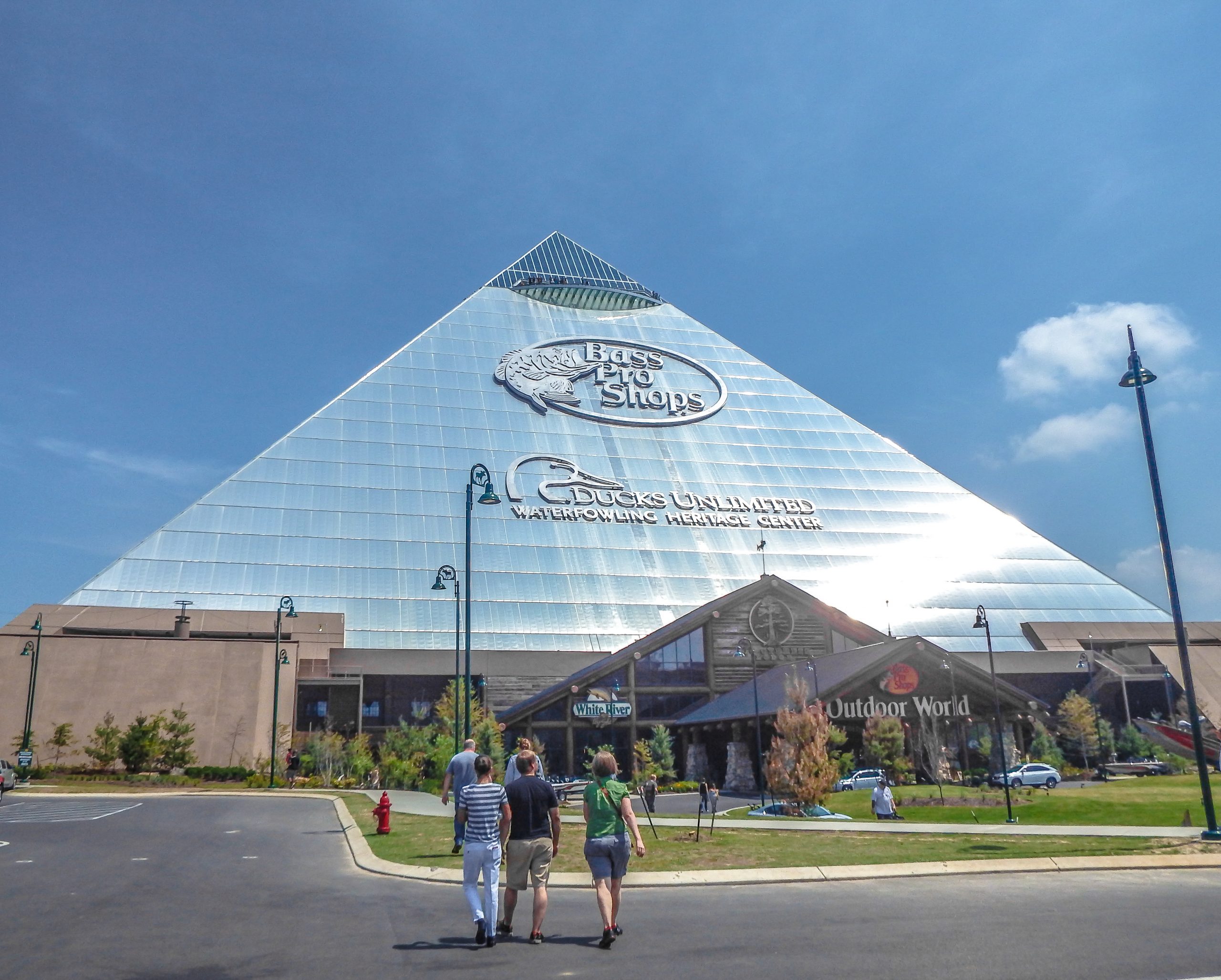
What is the Pyramid now?
After almost a decade of sitting unused, the Pyramid reincarnated into something wholly new and unforeseen: the world’s largest Bass Pro Shop. Hey, you wanted far-reaching notoriety, you got it. What must you have done in your past life to deserve this, P?
Regardless, as a (pretty much) lifelong Memphian, I’m glad the building is once again serving a purpose, even if that purpose is duck decoys and bottles of buck urine.
Inside the Memphis Pyramid today you’ll find:
- the world’s largest Bass Pro Shop and everything that entails
- a bowling alley
- numerous shops and restaurants
- the Big Cypress Lodge—an “outdoors”-themed hotel inside the pyramid
- the country’s tallest freestanding elevator
However, the highlight of the “Great American Pyramid” would have to be The Lookout—a full-scale bar and restaurant with two outdoor observation decks at the top of the Pyramid. From up here on these glass-bottomed platforms 300-feet above the city, you can see all of downtown Memphis, Mud Island, the Mississippi River, over into Arkansas, and miles and miles out east.
At its core, The Lookout is a bar/restaurant. The bar features local beer, cocktails, and a 10,000-gallon catfish tank, as you’d expect. The restaurant serves actually really great southern meals in huge portions. Plus, the $10 fee you paid to ride the fancy elevator up to the top will be applied to your dinner bill. I highly recommend eating dinner here or at least stopping in for a brew with a view.
Where to find the Pyramid: 1 Bass Pro Drive, it’s downtown on the river, honestly you can’t miss it
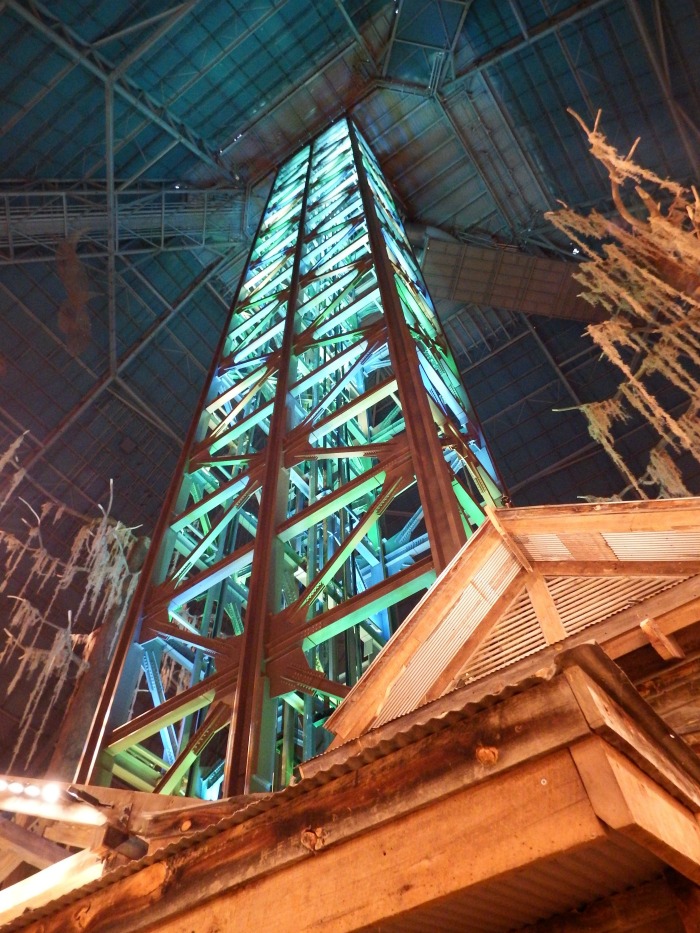
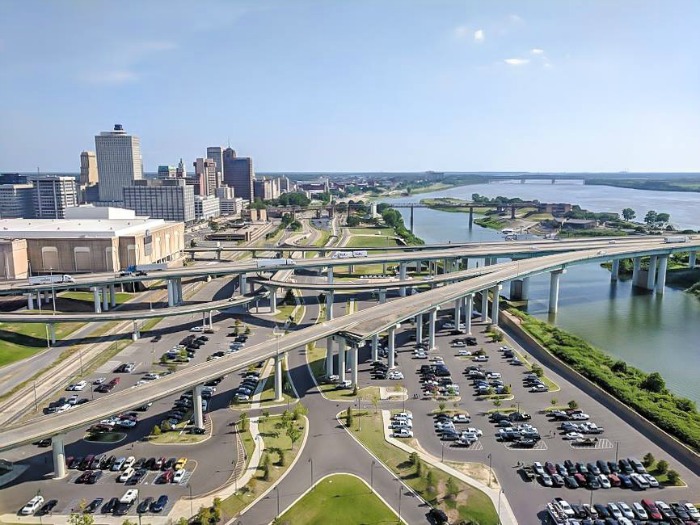
Institute of Egyptian Art and Archaeology
However, the Pyramid isn’t Memphis’s only post-modern tribute to its Egyptian namesake. There’s actually a whole pyramid scheme, if you will.
In 1985 the University of Memphis (at that time, Memphis State University) opened its Institute of Egyptian Art and Archaeology. The inaugural ceremony featured Mrs. Jehan Sadat, widow of the former Egyptian President Anwar Sadat, as the featured guest speaker.
The IEAA’s museum collection began with the purchase of 44 Egyptian artifacts from the Museum of Fine Arts in Boston. They purchased these items with money donated to the university a full decade before the founding of the IEAA.
Today, the IEAA runs a modest museum–nothing like the Egyptian Museum in Turin, Italy I visited, the world’s 2nd largest–but it is open to the public and completely free to visit. The museum’s collection contains over 1400 items but it’s permanent exhibit displays about 200 objects ranging from 3800 BC to 700 AD.
One particular highlight of the museum though are two ancient quartzite blocks. These blocks were presented to the city of Memphis in 1917 by the chairman of the Memphis Park Commission and are possibly Memphis’s oldest acquisition relating to its namesake. The two blocks were originally part of a palace in Memphis, Egypt and are decorated in honor of Pharaoh Amasis of the 26th Dynasty.
Additionally, the University of Memphis now offers bachelor’s and master’s degrees with concentrations on ancient Egyptian art and history. They also engage in numerous field research projects in Egypt.
Where to find it: University of Memphis Communication and Fine Art Buildings, 3740 Norriswood
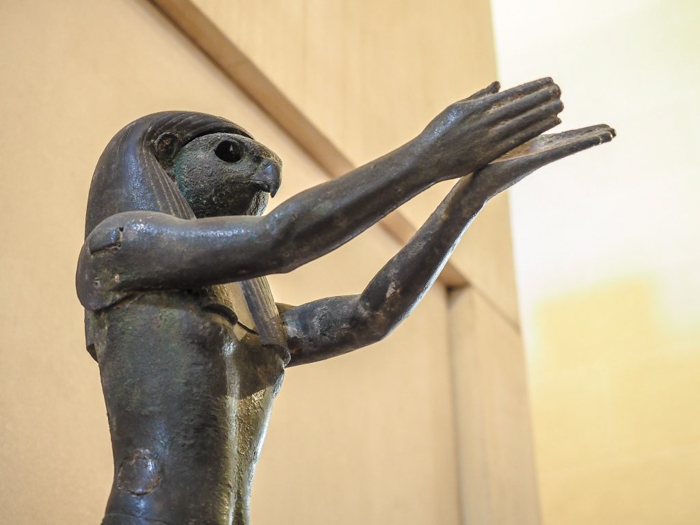
Ramesses the Great exhibition and statue
In 1987, just two years after the opening of the IEAA, Memphis experienced its single largest tourist attraction in the city’s history when the exhibition of Ramesses the Great came to town straight from Memphis, Egypt.
More than 675,000 visitors popped in to check out the 60-ton statue of Ramesses II discovered in Memphis, Egypt in 1961. (Plus many more artifacts relating to Ramesses the Great) This statue is now one of the highlights of the open air museum in Mit Raheena.
A couple years later after the Pyramid was constructed, a replica statue of Ramesses II was sculpted and placed outside of it in an ever-growing attempt to stay true to our roots… of wanting badly to be regal and exotic. This replica now stands tall on the campus of the University of Memphis, just as the ancient Egyptian pharaoh Eddie Murphy would’ve wanted. Do you remember the time?
Where to find it: University of Memphis, 3775 Central Ave
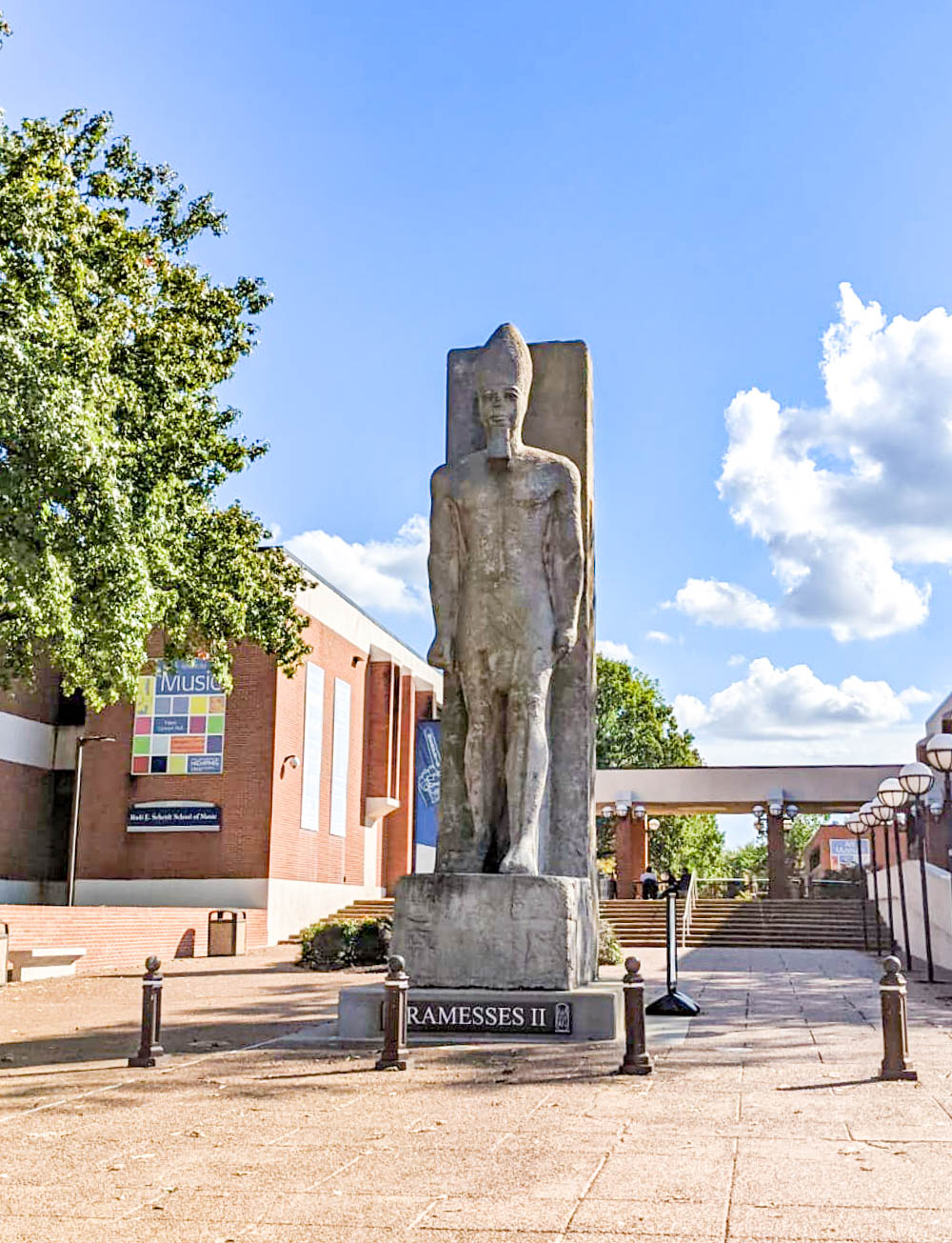
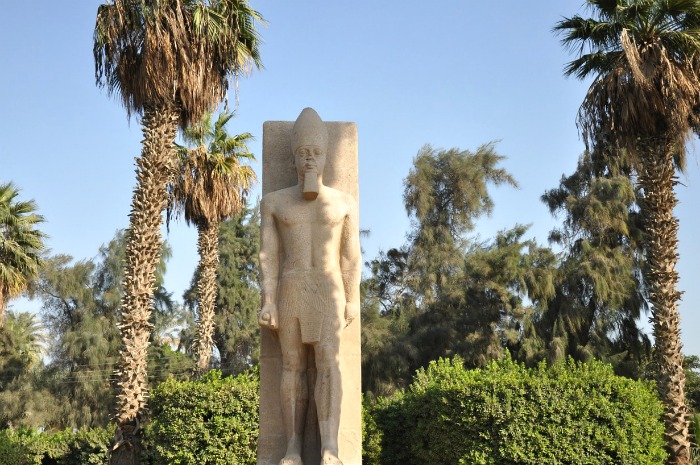
The Memphis Zoo
After the Pyramid, the Memphis Zoo is the most popular of the Memphis, Tennessee and Memphis, Egypt connections.
In 1990 the Memphis Zoo began a continuing-to-this-day series of upgrades and renovations with a new front gate and entry plaza in the style of the motherland. The renovation includes:
- the fancy new entrance
- imposing columns
- an obelisk
- bold colors and hieroglyphics a-plenty
- a miniature Nile River
- and a bunch of statues we used to get in so much trouble for climbing on during school field trips.
And these are just the start of the Egyptian references. When you see the animal-shaped chicken nuggets in the café you’ll be like “WHOA—just like in the history books, man!”
Now I didn’t know this before I started researching for this article, but the Memphis Zoo’s Egyptian-style façade was no mere conceptual whim. The design is based on actual historical writings and leftover ruins, which is also how they came up with the design for your local White Castle if I’m not mistaken.
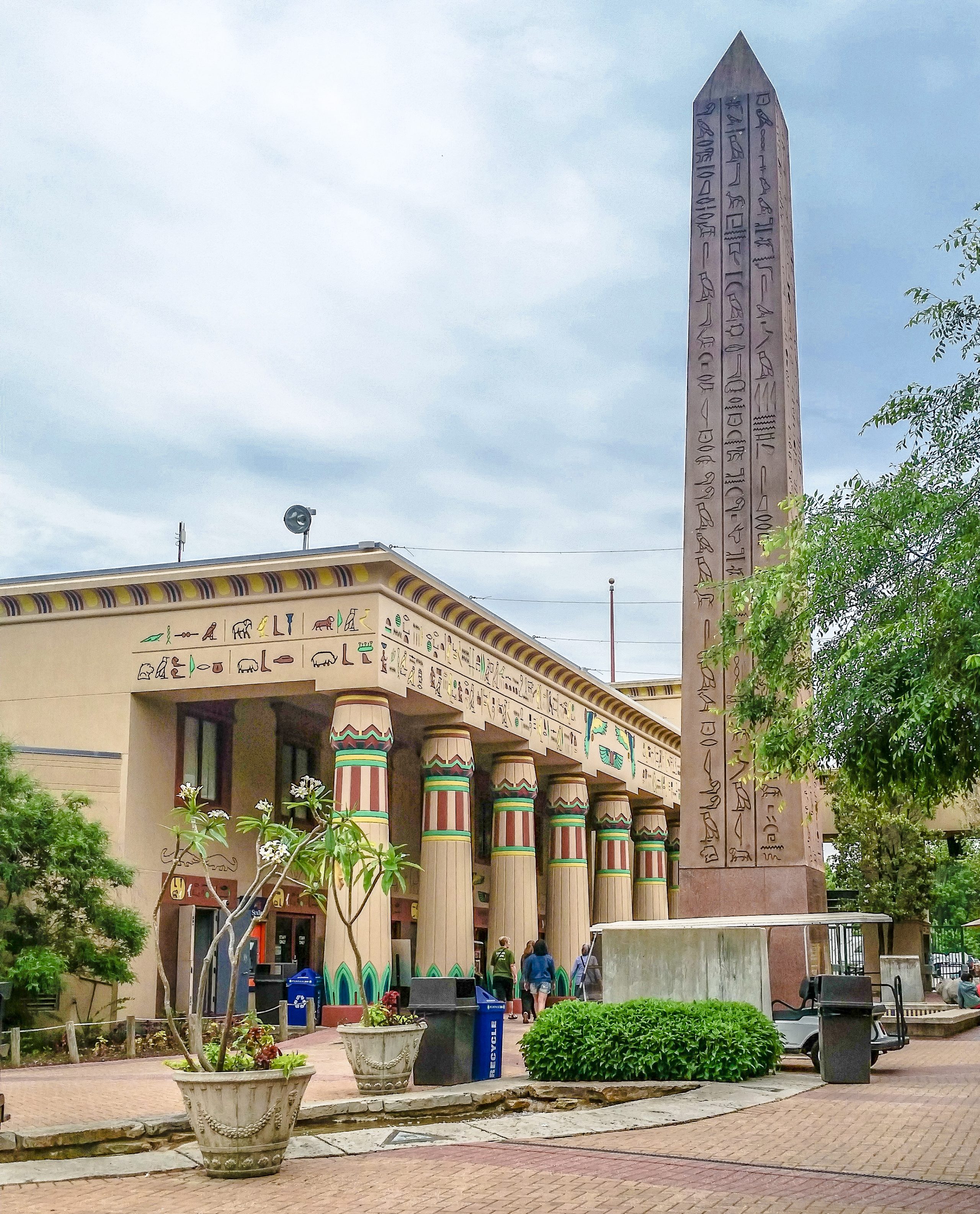
The Great Temple of Ptah
A long time ago in a galaxy far, far away in northern Africa, the Great Temple of Ptah stood in the city of Memphis as one of the three most prominent places of worship in Ancient Egypt. Ramesses II was there; Magic Johnson was not.
Little is known about the Great Temple save for the appearance of its main entrance which, thanks to artist rendering, we now know looks like… (drumroll please)
Here’s the Memphis Zoo…
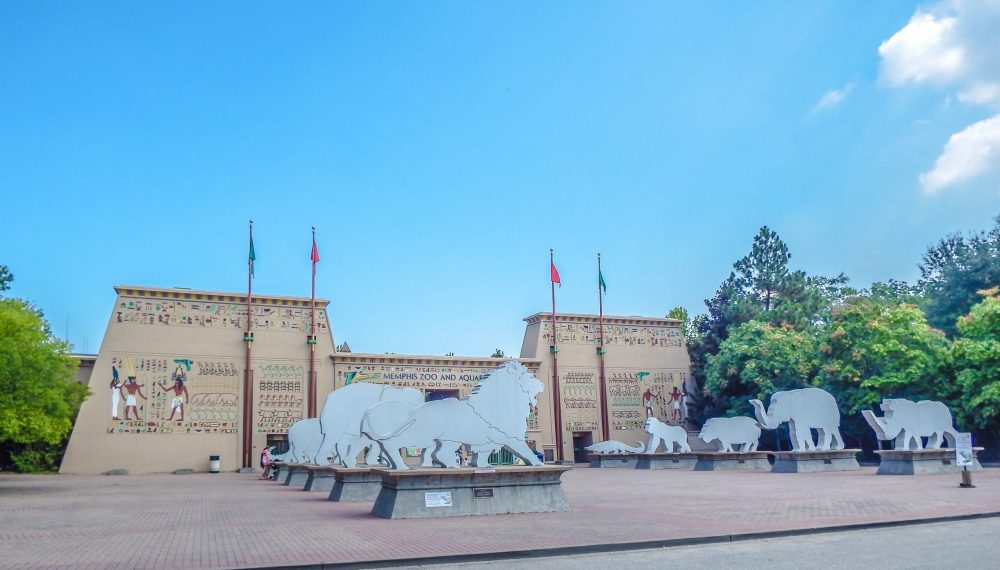
And here’s the ancient Temple of Ptah…
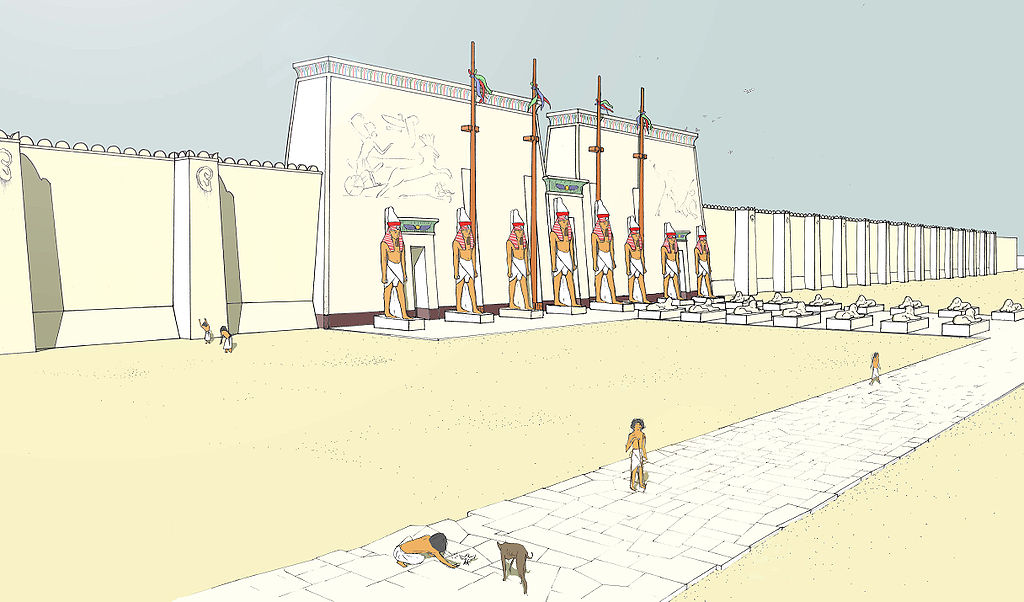
WHAT! I mean… WHAT! I wonder if little Egyptian children used to get smacked for disobeying their teachers and climbing on those sphinx out front. Sphinxes?
Inside the zoo you’ll see Egyptian references everywhere too. For instance, the replica statue of Sekhmet, the lioness-headed goddess who had a huge cult following in ancient Memphis, outside the entrance to Cat Country.
Sekhmet is a warrior goddess but also a solar deity and the daughter of the sun god Ra. She’s associated with the scorching heat of the sun. So if you know that infamous Memphis heat well, then now you also know who’s to blame.
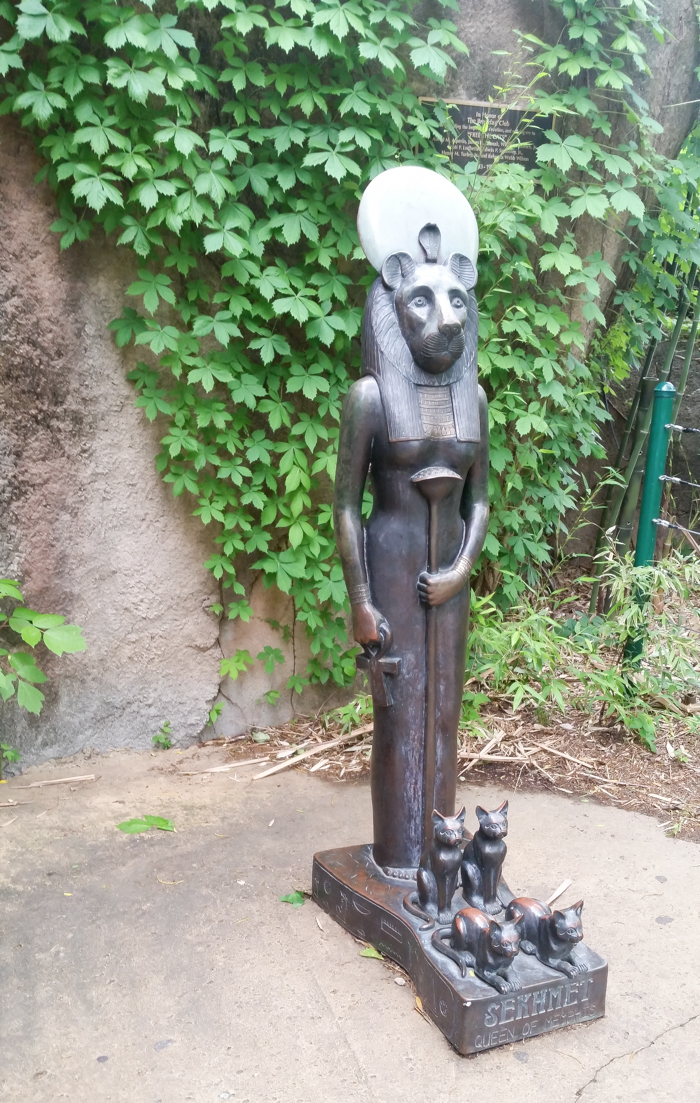
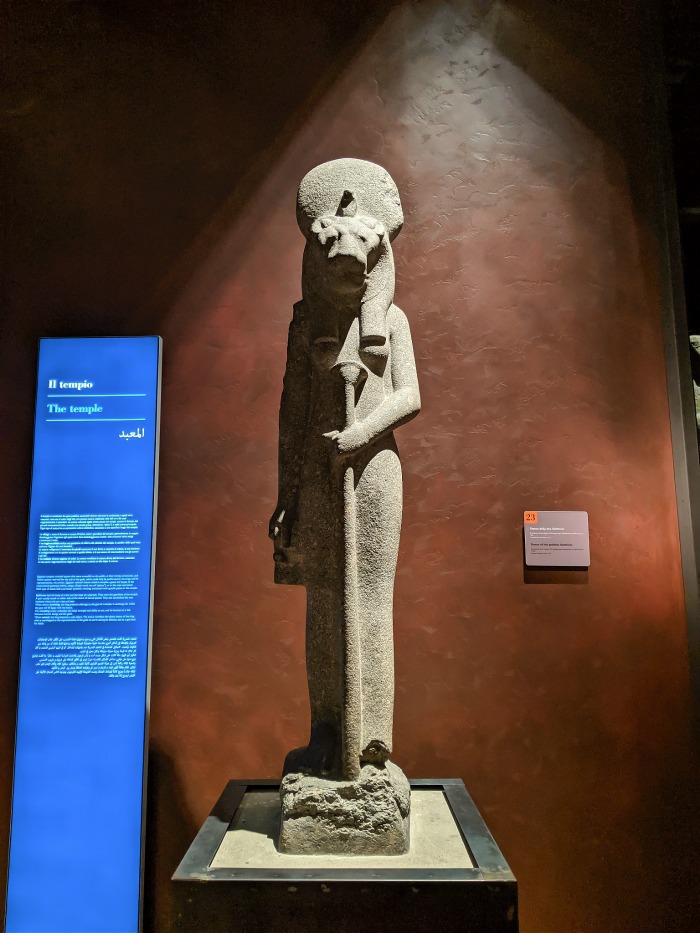
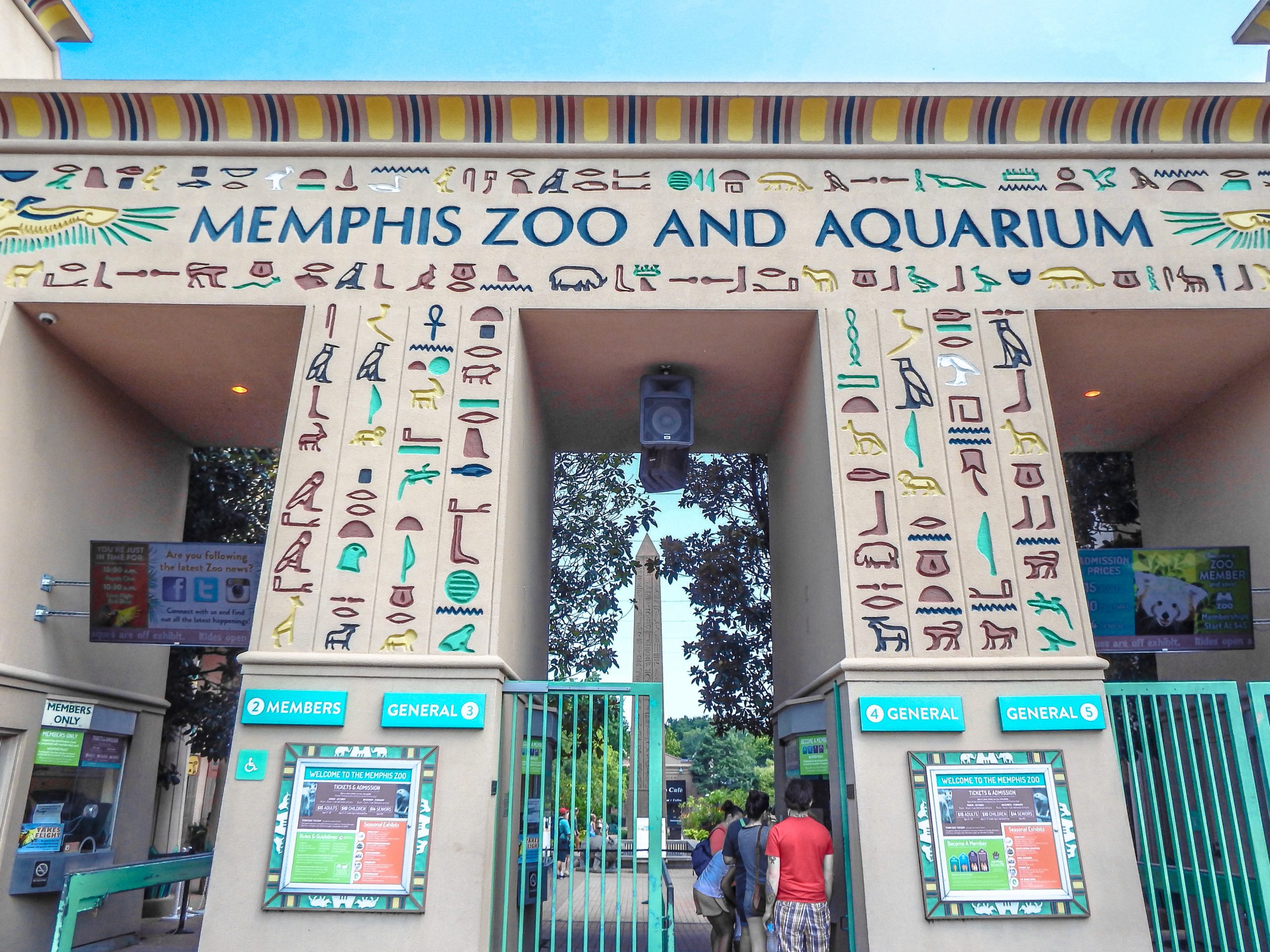
Uncredited artwork
Also located in downtown Memphis’s South Main district, just a few blocks from the Obelisk Flour building, is an Egyptian-themed mural by an unknown artist.
Literally, there’s no information to be found on this but there it is. I particularly like the one of the Sphinx-shaped riverboat–a perfect Memphis, Tennessee and Memphis, Egypt amalgamation.
Where to find it: 372 S. Main Street, at the corner of Talbot Ave.
The latest “revival”
Memphis, Tennessee’s Egyptian fascination eventually puttered out and is, like its original inspiration, a thing of the past. However, there have been a couple of references in recent years to be found if you try really, really hard like I did.
In 2014, Katy Perry released the music video for her single “Dark Horse” featuring famed Memphis rapper Juicy J. In honor of… Juicy? Mr. J? she suggested the video have an Egyptian theme to pay homage to his “Memphis” roots. Featuring a pyramid made of Twinkies and a chariot with hydraulics, the resemblance is actually uncanny. (I told you you’d have to dig deep.) Watch the video here.
That same year, the Memphis Redbirds baseball team (AAA for the St. Louis Cardinals) debuted some of the throwback-est throwback jerseys in minor league baseball history. In honor of AutoZone Park’s 15th anniversary, June 7th, 2014 was dubbed “Memphis, Egypt tribute night” complete with Egyptian-style baseball uniforms.
These uniforms featured:
- blue and gold stripes à la Egyptian nemes, the striped head cloths worn by ancient pharaohs (like on King Tut’s sarcophagus, for instance)
- the falcon-headed Egyptian god Horus, revamped to look like a redbird
- and hieroglyphics spelling out the ancient name of the city of Memphis: Men-nefer
I’m really digging those socks though.
View this post on Instagram
Growing up in Memphis in the 80s and 90s, the “Egyptian thing” felt so much bigger than just the few references that it actually was. Regardless, this very prominent aspect of my childhood memories in Memphis is indeed enduring and beautiful.
More info on Memphis, TN
Heading to Memphis? Read hotel reviews on TripAdvisor then book your room here!
What else have I written about Memphis? Check out these posts.
Like this post? Have questions? Hit me up on Facebook | Twitter | Instagram | Pinterest


Have you seen any of these Egyptian Memphis sights?
Let me know below!
But first, pin these images:
